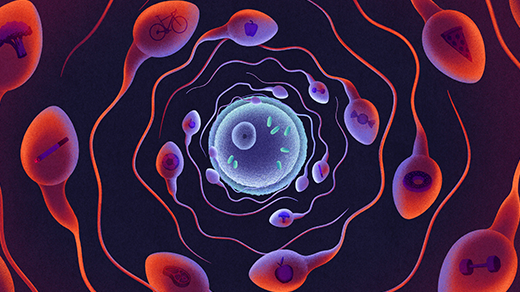Archive
Latest Articles
How Dad’s Fitness May Be Packaged and Passed Down in Sperm RNA
Research into how a father’s choices — such as diet, exercise, stress, nicotine use — may transfer traits to his children has become impossible to ignore.
The Year in Mathematics
Explore a shape that can’t pass through itself, a teenage prodigy, and two new kinds of infinity.
The Year in Physics
Physicists spotted a “terribly exciting” new black hole, doubled down on weakening dark energy, and debated the meaning of quantum mechanics.
The Year in Computer Science
Explore the year’s most surprising computational revelations, including a new fundamental relationship between time and space, an undergraduate who overthrew a 40-year-old conjecture, and the unexpectedly effortless triggers that can turn AI evil.

The Year in Biology
Take a jaunt through a jungle of strange neurons underlying your sense of touch, hundreds of millions of years of animal evolution and the dense neural networks of brains and AIs.
String Theory Inspires a Brilliant, Baffling New Math Proof
Years ago, an audacious Fields medalist outlined a sweeping program that, he claimed, could be used to resolve a major problem in algebraic geometry. Other mathematicians had their doubts. Now he says he has a proof.
Cryptographers Show That AI Protections Will Always Have Holes
Large language models such as ChatGPT come with filters to keep certain info from getting out. A new mathematical argument shows that systems like this can never be completely safe.
Why Is Ice Slippery? A New Hypothesis Slides Into the Chat.
A newly proposed explanation for the slipperiness of ice has revived a centuries-long debate.
The Polyglot Neuroscientist Resolving How the Brain Parses Language
Is language core to thought, or a separate process? For 15 years, the neuroscientist Ev Fedorenko has gathered evidence of a language network in the human brain — and has found some parallels to LLMs.







